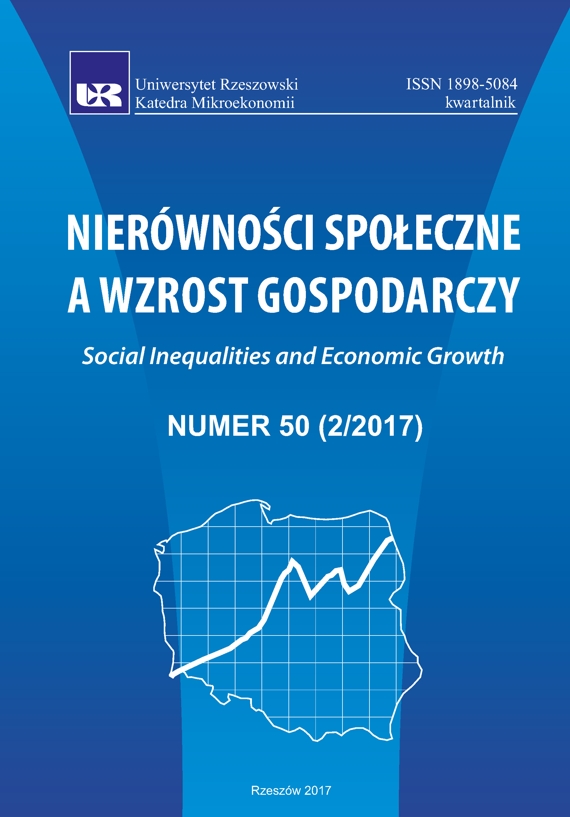The economic growth and convergence in Poland and Slovakia under conditions of the European Union membership
DOI:
https://doi.org/10.15584/nsawg.2017.2.4Keywords:
Poland, Slovakia, growth, economic convergenceAbstract
The subject of the article is an empirical analysis, the aim of which is to verify the benefits of accession to economic integration grouping for countries with a lower level of economic development. Case studies include: the EU-10 countries from Central and Eastern Europe, in particular Poland and Slovakia. Verification of the integration benefits was carried out by economic growth assessment in terms of convergence, which can be used as a proof of closing the development gap. The subject of evaluation is beta and sigma convergence. Test period covers the years 2000–2014/15. Key conclusions from the analysis of the European Commission figures and authors’ research are: 1) the results of the analysis confirm the possibility of speeding up economic development as a result of accession to the common market by countries with economic gap; 2) the pace of the convergence process was strongly differentiated among the EU-10 countries; 3) there can be a lot of factors affecting differences in the pace of the convergence process e.g.: strength of the internal market, specializing in exports, competitive advantage and exports increase, inflow of foreign direct investment, technological progress, labor productivity growth, etc.; 4) the rate of reduction of the development gap was much higher under conditions of prosperity and economic and financial crisis significantly weakened the catching-up process; 5) Among the surveyed countries, Poland was the most resistant to the crisis; 6) deep decline in GDP during the 2008–2009 crisis occurred in the Baltic countries.Downloads
Downloads
Published
2020-11-13
How to Cite
Mucha-Leszko, B. (2020). The economic growth and convergence in Poland and Slovakia under conditions of the European Union membership. Social Inequalities and Economic Growth, 2(50), 74–88. https://doi.org/10.15584/nsawg.2017.2.4
Issue
Section
Articles
License
Copyright (c) 2017 University of Rzeszow

This work is licensed under a Creative Commons Attribution-ShareAlike 4.0 International License.


